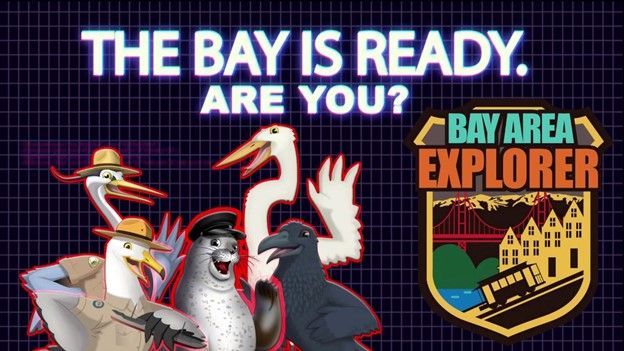Enjoying Outside, Inside: Explore the Bay Area and Berryessa Snow Mountain National Monument with Bay Area Explorer 2.0!

If you happened to catch Tuleyome's last episode of Monumental Questions and Answers, we gave you an introduction to the Agents of Discovery App. The application uses augmented virtual reality to help you learn about and explore the natural world around you by guiding you through "missions" at particular locations. As luck would have it, July 1st through August 31st happens to be Bay Area Explorer 2.0 with several participating locations within the Bay Area. Three of those participating missions are in the Berryessa Snow Mountain National Monument boundaries! Two of those missions include the Cache Creek Natural Area and Cowboy Camp. During the Bay Area Explorer 2.0 time period you can earn special prizes by completing missions at different locations. If you complete a total of 4 missions you can become a Bay Area Explorer and earn a special badge. You will also be entered into a drawing to win a Golden Poppy Annual Day Use pass for use at California State Parks!
How is this helping me enjoy the outside, inside you ask? You can do the missions from home! the TV weather guy says it's going to be H-O-T this weekend so it might be the perfect time to explore Berryessa Snow Mountain National Monument from the comfort of your air-conditioned house while you enjoy a popsicle. The missions will count toward you total amount of missions played for the Explorer Campaign, just be sure to log in before you start. To get rockin', search up "Explore the Bay Area" and hit the Challenge markers to see what's out there waiting to be discovered at the participating locations.
There are many other participating locations but we’re especially partial to the Berryessa Snow Mountain National Monument locations since they’re so close to home and amazingly captivating with history, unique geology, wildlife and specialized plants. If you’d like to see the other missions available in the Bay Area, please visit the Agents of Discovery website.
Cowboy Camp is located among oak woodlands, grasslands and chaparral. It has a day use area with a wildlife viewing deck, overnight parking and a group campsite which includes 27 individual horse camp sites and parking for trailers. Please visit the BLM website and Tuleyome's Trail Page for other camp information if you plan on visiting in person.
Cache Creek Natural Area is secluded and closed to motorized vehicles and does not have developed facilities or campgrounds. What it does have is habitat for wildlife and rare plants, protected cultural resources values and primitive recreation opportunities which include wildlife viewing, running, hiking, equestrian use, hunting and fishing. Please visit the BLM website and Recreation.gov to learn more about the Cache Creek Natural Area.
Have fun and good luck, Agents!
RECENT ARTICLES






